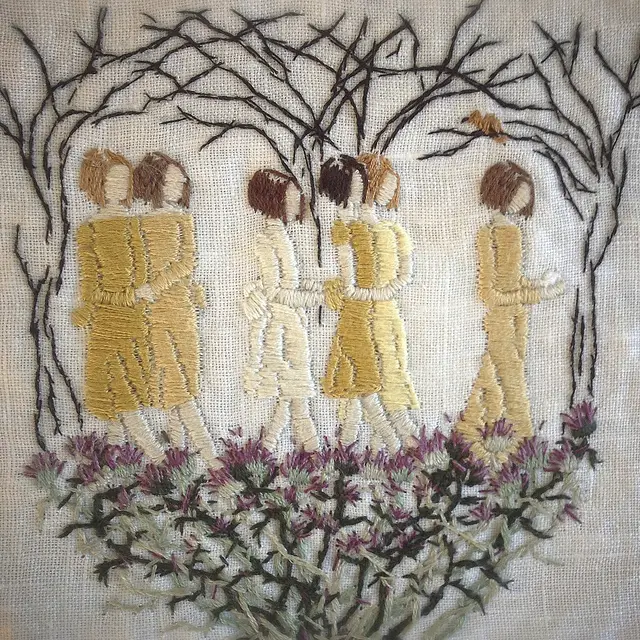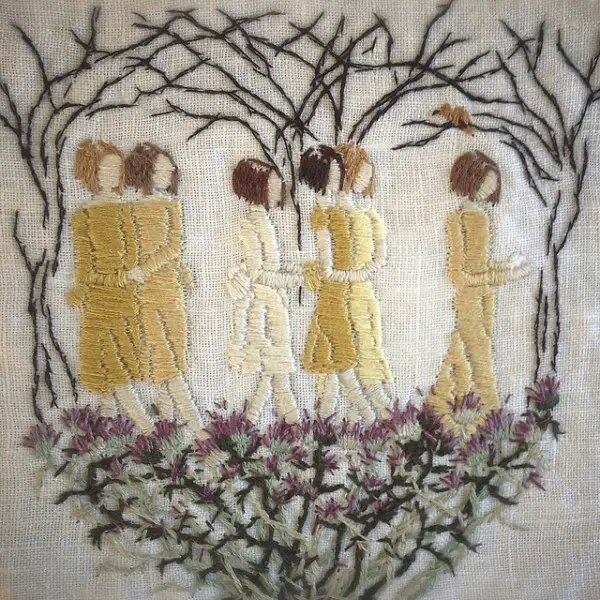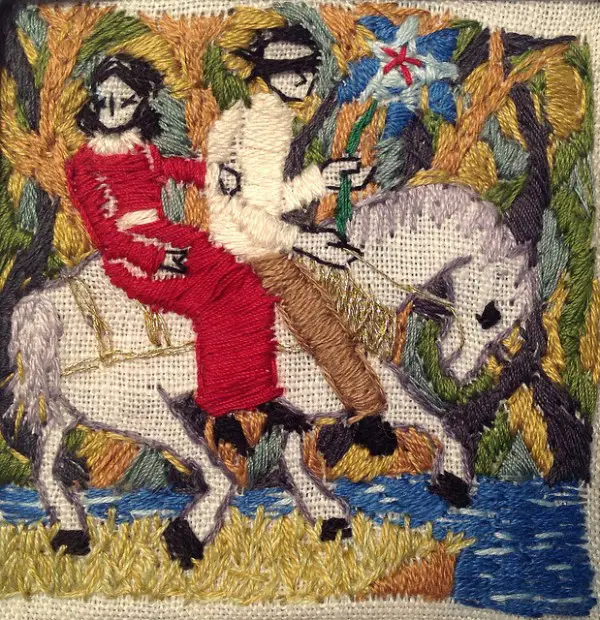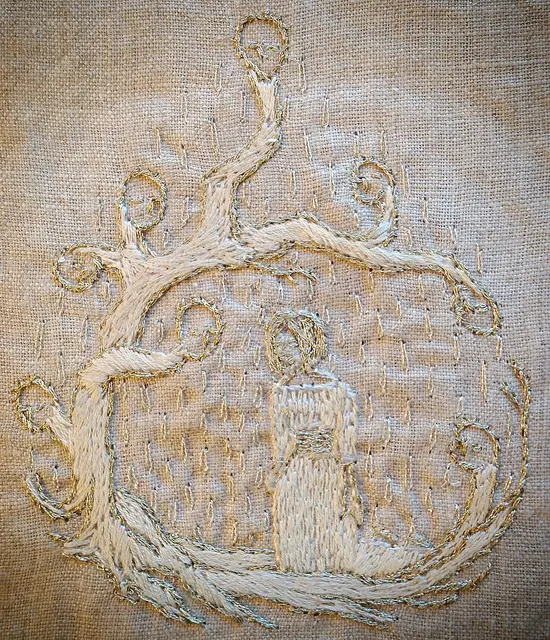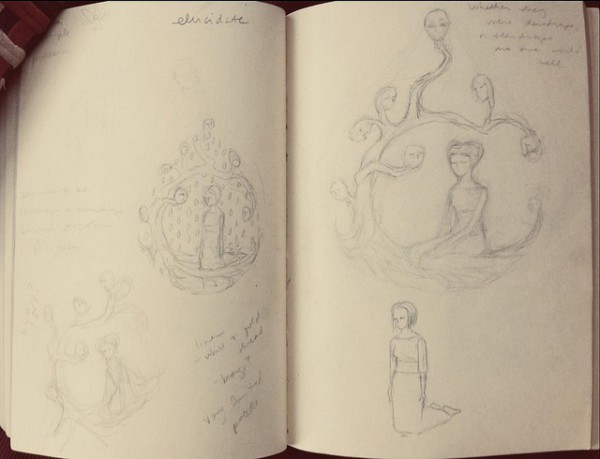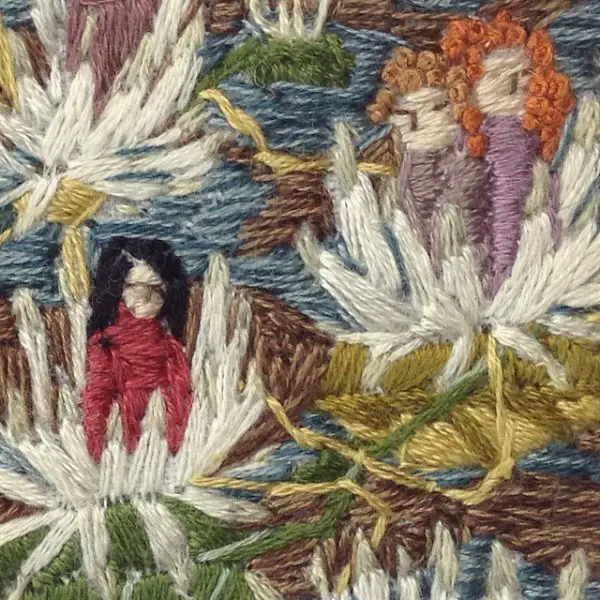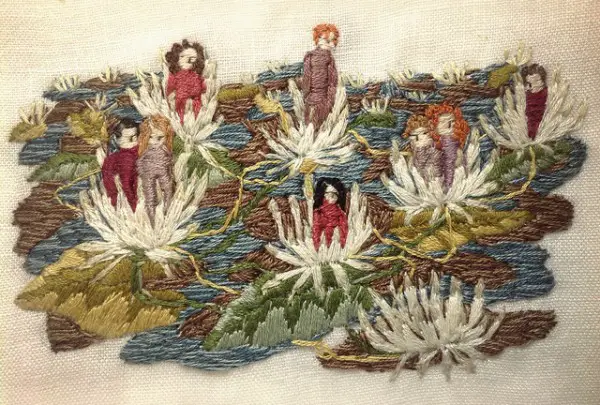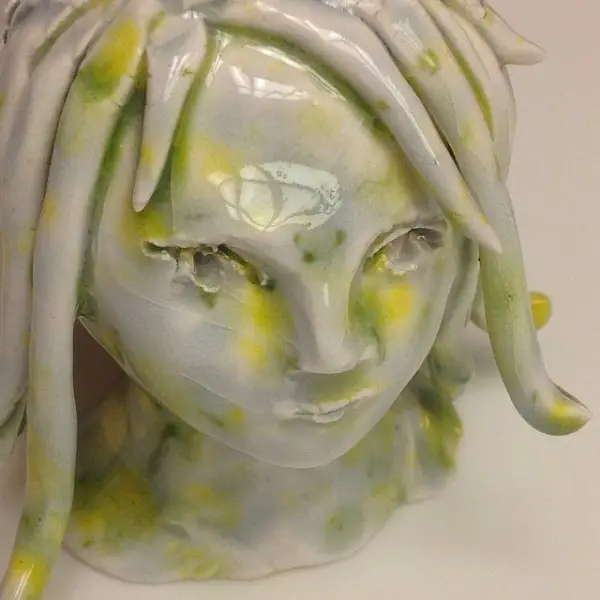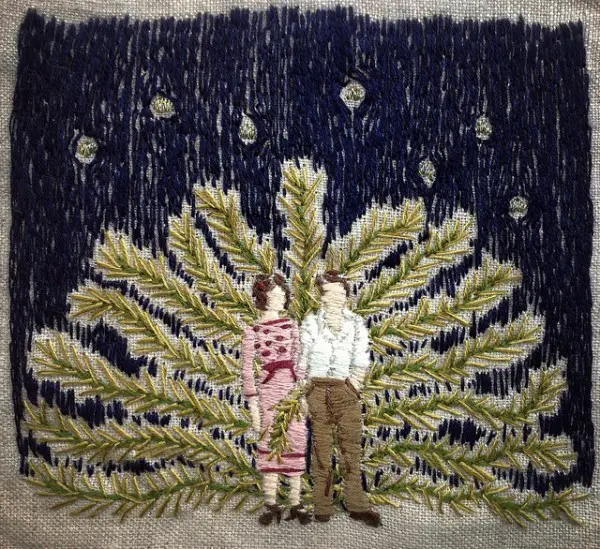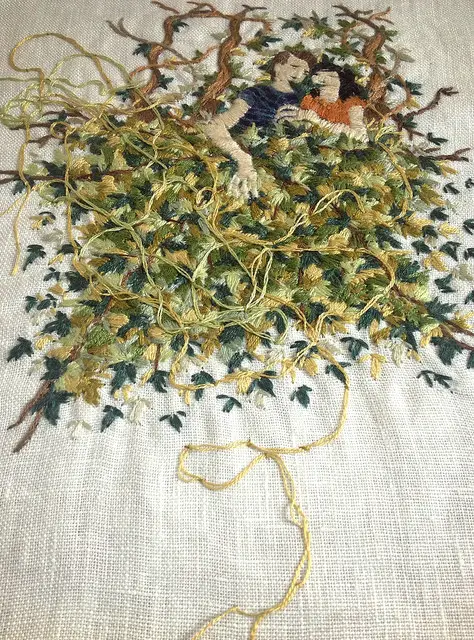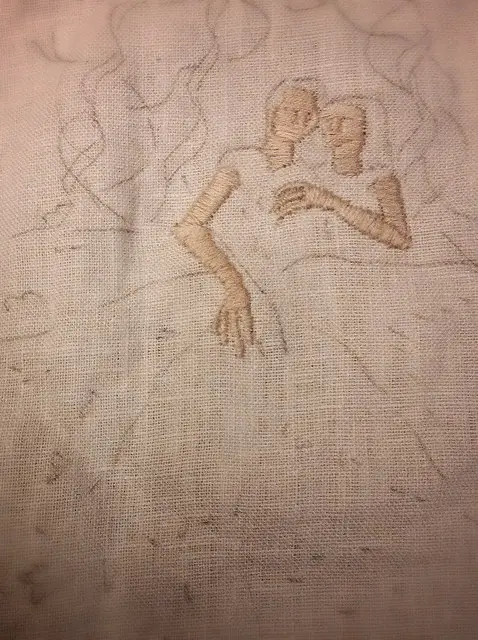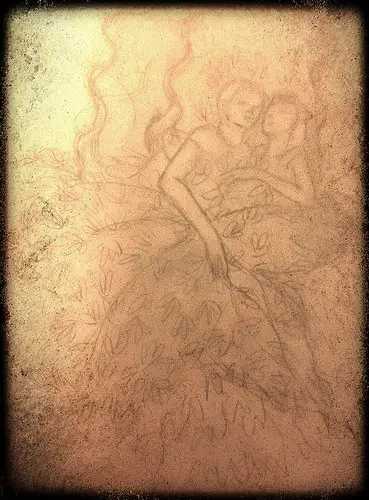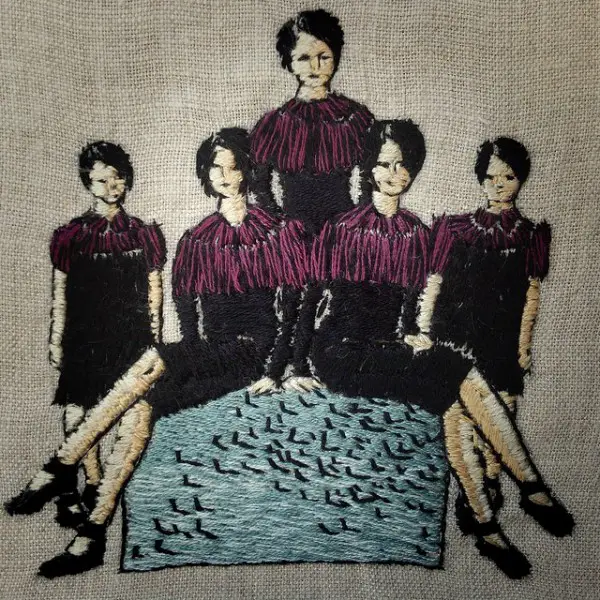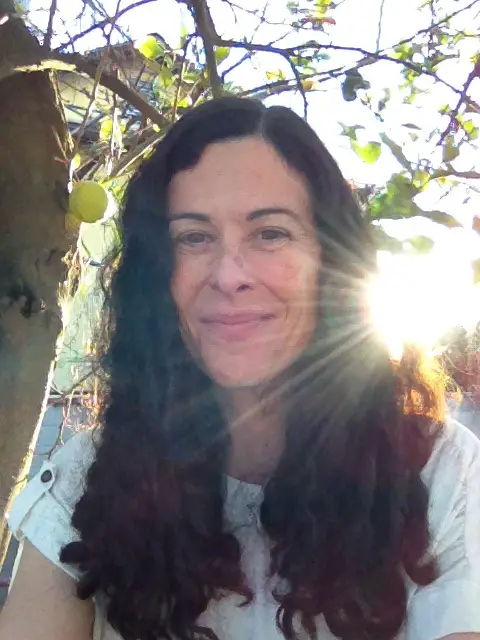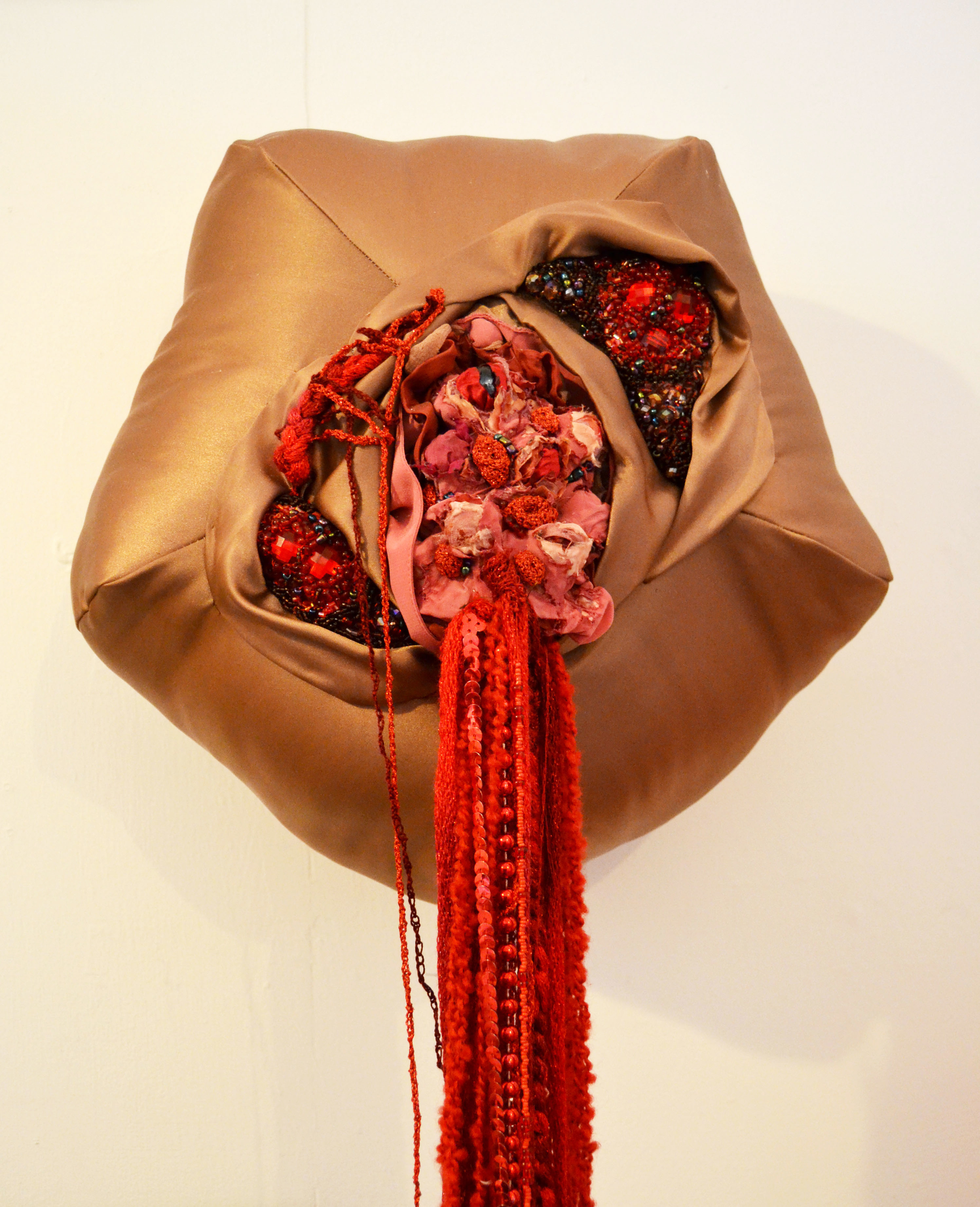This post originally appeared in March 2014.
It’s a lucky time for those of us who love embroidered artwork. We are witnessing the emergence of a hugely talented artist – welcome to Michelle Kingdom.
“even nightingales cannot live on fairytales,” 5 x 5 inch hand embroidery on linen.
It’s not that she is new to art — Michelle has been making art her whole life. The LA-based artist grew up in a creative family and earned a BA in Fine Art from UCLA. But until recently, Michelle kept her vibrant, riotously lovely textile creations to herself.
“My embroideries were almost like imaginary friends and I’ve only recently shown them to other people,” she says. For her, “embroidery became a very private form of art that I chose to keep to myself for many years. It was a refuge from outside influences, from judgmental thoughts that often sabotaged my attempts at painting.”
Michelle describes seeing her first piece of narrative embroidery in FiberArts magazine in the early 1990s. It struck a chord. “Figurative stories composed entirely out of thread – it felt like a direct link to my inner world, a medium tailor made for my secret thoughts.”
“whether the were dewdrops or teardrops or teardrops, no one could say,” 4 x 5 inch hand embroidery on linen.
What follows is an interview conversation that took place via email during the month of February 2014.
Your description of embroidered artwork as figurative stories composed entirely out of thread, really resonates for me. After working in other mediums for so many years, can you describe your first piece that you considered successful as textile artwork?
Even though I can’t remember a time when I wasn’t making things, I never felt like the art world had a place for me. Way back in art school, everything was highly conceptual, ironic and clever, massive in scale, and cold. Stitching became my refuge away from all that a safe place to explore ideas without an audience or outside influences. This was around 1990 and I didn’t know anyone else doing it, let alone even interested in it, so trying to make successful Textile art was incidental at best.
Embroidery seemed to be dismissed or overlooked as craft; decorative, school-girl relics, fussy and old-fashioned, small. But that is precisely what attracted me to it. It can be deceptively pretty, unapologetically female, traditional and na ve. I liked how the odd beauty of stitched worlds translated my thoughts in a way that other mediums couldn t as if it speaks in tiny whispers, and only those that care to listen can hear it.
For a long time my embroideries were sporadic and lacked a clear point of view. In the last few years, my vision began to focus on the tangle of interior worlds I finally felt I had something to say, even if it was private, even if it was bittersweet.
My first cohesive efforts began with the “People Become Memories” embroideries, which deal with issues of family and belonging, identity, remembrance and loss. Interpretations of collective memories were compressed and mythologized onto found silk strips. I suppose I would consider these my first successful pieces, not because they were visually or technically superior to my earlier work but because they felt meaningful and true.
I so appreciate how you share pages from your sketchbook on Flickr. Can you talk a little about some of the sources for your imagery?
As laborious as the hand stitching process is, the bulk of my time is actually spent thinking, researching and planning. Sources come from so many places, but nearly every piece is a synthesis of a few key elements.
Literature plays a big role for me, and I am endlessly influenced by the works of Virginia Woolf, Carson McCullers, Leo Tolstoy and Hans Christian Andersen in particular. Visual inspiration comes from old family photos, memories, art history and plain old imagination.
Together, words, pictures and inner voices take on their own stories in my sketchbook, then in fabric and thread. The actual stitching is done very intuitively, and the work stays in flux to the very end. Working on a tiny scale (typically between 2 to 5 inches for the entire piece), I am always fascinated and surprised by how the actual figures turn out, no matter much planning I ve done.
Thinking a little about your process Can you tell us the story about how you translated one of your pieces from an idea or sketch into an embroidered piece?
My most recent embroidery was initially inspired by an old photograph of my great-aunt Sadie and her husband. The couple was crouching down and huddled in a wooded area, dressed rather formally, and for some inexplicable reason Sadie had a large pile of leaves draped over her lap.
I was interested in the idea of a couple bound together, almost buried under leaves. A very different scene emerged in my sketch. I wanted to make a younger, more anonymous pair lying under a remote bed of ivy, pulling up a cover of leaves. Symbolism is important in my work and ivy was a deliberate choice. Several sketches were made, each progressively foreshortened and asymmetrical. Figures were stitched first, then the backbone of vines was placed creating a larger leaf-like silhouette. One by one, shades of green were laid down, tightly filling the space into a patchwork.
In the end, the image felt too tidy, the couple too dreamy, my working title somehow not right. A single leaf was placed over their mouths. A snarl of loose threads was arranged and carefully tacked down. Cropped with fraying edges left unfinished, the completed piece became The years fell, and grew into vines.
What interactions have you had with other textile artists, either online or in the physical world? What has been the effect (if any) of those interactions, either in terms of influences on your work or in terms of technique?
I wish I knew other textile artists in real life, but my interactions have really only been online. I do find the array of ideas and techniques people share inspiring and motivating, though I don’t think it has changed the content or the way that I work. Somehow the exposure to so much material online helps me clarify my own direction and intention. I’ve been told my work is “unique” which I guess I could take a few ways! Actually, I do consider it a compliment, as keeping my vision relatively pure is important to me.
Can you tell us what are you’re currently working on or what projects are on your immediate horizon that you are excited about?
The embroidery I’m working on at the moment is probably the largest I’ve done yet. At about 3×16 inches, it’s made up of multiple miniature vignettes strung together. Initially it started out quite differently, but has evolved into a piece about the totality of living and is loosely inspired by Edvard Munch’s painting “The Dance of Life.” Several other projects are brewing in my sketchbook too, and I am mostly excited to just keep stitching away.
********************
Michelle currently lives in Los Angeles with her ex-pat British husband and daughter.
I’m amazed at the rich, evocative imagery Michelle infuses into her tiny embroidered artwork. Even the titles are poetic. To say that I’m excited to see her work continue to develop and evolve would be an understatement. She will showing her first embroidered piece in an exhibition soon.
For now, treat yourself to spending lots of time looking at Michelle’s work on her website. It is a digital sketchbook and gallery of her drawings, textile pieces, paintings and photography. A gorgeous kaleidoscope of an artist’s creative life.

